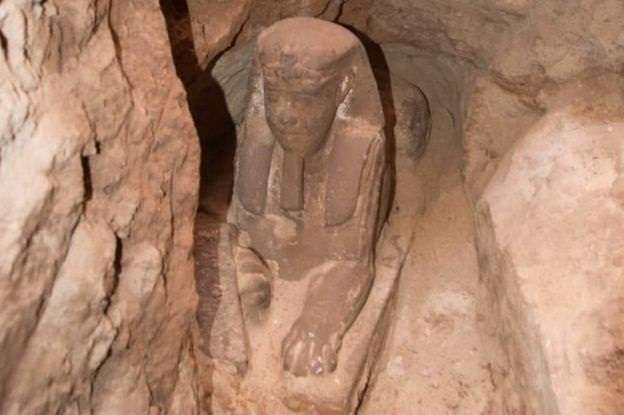Officials in the country say they believe the sandstone piece – which stands 38cm tall and 28cm wide – probably dates back more than 2,000 years to between 305BC and 30BC.
It was found at the temple of Kom Ombo near the southern city of Aswan. It follows two other sandstone reliefs – both of King Ptolemy V – being found there earlier this year.
Ptolemy V, who ruled from 210BC until 180BC, is especially famed among ancient Egyptian leaders because his deeds are charted on the Rosetta Stone – which would eventually help modern-day experts learn to read hieroglyphs.
The antiquities ministry says the temple of Kom Ombo was built during the reign of his son, Ptolemy VI. It hosted the twin gods Sobek and Haroeris.
The sphinx was uncovered while groundwater was being drained, it confirmed on Sunday.
Abdul Moneim Saeed, the head of Aswan's antiquities department, said experts would now carry out further research to find out more about its possible purpose.
The sphinx represented royal power in ancient Egypt, combining the physical strength of a lion with the wisdom and might of a king.
The Great Sphinx by the pyramids of Giza is the largest and most famous.
The Independent
More about: Egypt
















































